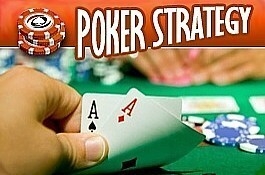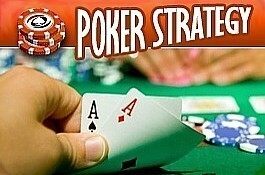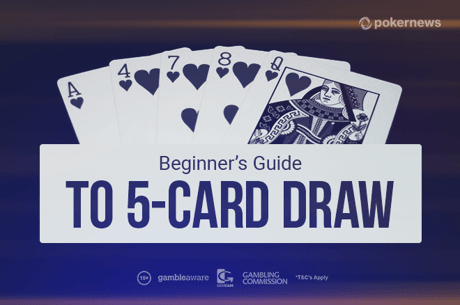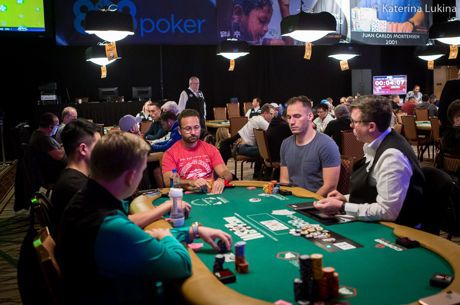Talking HORSE with Lou Krieger, Vol. 6: The Hold’em and Omaha/8 Playing Zone
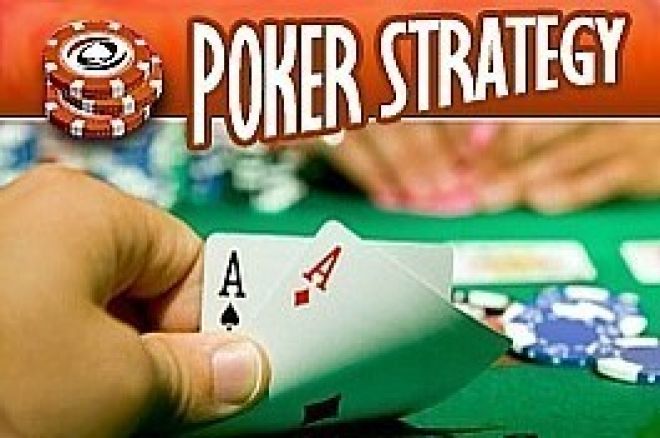
In case you missed it, please go back and read the first article in this two-part look at the effect of the playing zone in the hold’em orbit of fixed-limit HORSE games.
With an extended playing zone you can’t take too much for granted, and a hand like top pair, top kicker can be very vulnerable simply because any card that doesn’t directly help you might help another player. The playing zone’s width goes directly to a hand selection and playing strategy.
In loose, passive games, any ace on the board frequently extends the playing zone dramatically. While it’s a lot more likely that a board with an ace and other big cards will give another player two pair, even unsequenced lower cards can help someone in overly loose games, when the majority of players who catch part of the flop are likely to stick around for the duration.
In HORSE’s Omaha/8 round, the playing zone concept is equally important. Perhaps even more so, because with six combinations that can be made from the four cards in your hand, a lot of probable hands become possible, and knowledge of the playing zone becomes vitally important. For example, if you’ve been dealt A-2-K-K in an Omaha/8 game and the flop is K-3-8 of mixed suits, two different playing zones have been touched.
Two low cards mean that anyone with a live low draw will stick around to the river trying to capture half of the pot. While you don’t have any worries at this juncture about a straight draw panning out and your set of kings is currently in the lead, it’s critically important to realize that sets are not the powerhouse hands in Omaha/8 that they are in Texas hold’em.
Even when a set holds up in Omaha/8, you might wind up with only half the pot. Nevertheless, you are drawing to the nut low, so even if another player also holds an A-2, you’ll get half of the low end of the pot as long as a third low card doesn’t duplicate the ace or deuce in your hand. And your trip kings may hold up for the high end of the pot.
In Omaha/8, profitable playing zones lie at the deck’s polar extremes. You’d like to jump into the fray with a fist full of big cards, a handful of babies, or some combination like A-2-3-K that gives you big and little coordinated combinations — and if your ace and king are suited to one or both of the babies, so much the better.
The vast mid-range of the deck is not where the playing zone is located at all, and when you see an opponent turn up too many hands during the Omaha/8 round of a HORSE game that contain a nine, you can take it to the bank that he is clueless about the Omaha/8 playing zone. While you could make a straight if you begin with hands like 9-8-7-6, someone else is likely to make a low hand. A bigger straight is also a distinct possibility, and if that scenario plays out, you’ll find yourself doomed in both directions.
Knowledge of the playing zone gives astute players myriad clues about opponents’ hands. If you have a hand with an ace, deuce, and trey in it, and an ace or deuce falls on the flop or turn, there’s a very good chance that your A-3 is now the best made low hand or low draw, and that anyone playing a hand with only two low cards — one of which is either an ace or a deuce — has been counterfeited. That pretty much assures you of winning the low end of the pot if you complete your hand, and anyone else who had a low draw or low hand that has been counterfeited now can be seen as dead money that’s about to walk its way over to your stack.
By the same token, a Broadway card or two is always worth being wary of, because the top end of the deck in Omaha/8 is also a playing zone. And a Broadway straight is a much more likely hand than a straight that runs 10-9-8-7-6 or J-10-9-8-7, simply because fewer opponents will stick around with mid-range holdings.
When you’re playing poker, always look to the playing zone when attempting to determine what kind of hand other players might be holding, or when you’re trying to make an assessment about how safe or vulnerable your own hand might be. But the playing zone can change depending on the game and your opponents. Sane players play sane hands, but in loose games the playing zone is unbounded and might even extend across the entire deck. When you’re in a game like that, be careful. When it’s tough to put your opponent on a hand, it’s difficult to know how your hand stacks up against theirs.
It’s times like these when you are likely to find yourself losing pots you figured to win. But there’s a silver lining in this cloud of increased fluctuations and variance. All of those excess callers make for bigger pots when you win them. And winning money is what poker is all about.
# # #
Lou Krieger is the editor of Poker Player Newspaper. He’s the author of more than 400 articles on poker strategy and 11 books on poker. He can also be heard on the internet radio show, “Keep Flopping Aces” which airs Thursday night at 9 p.m. Eastern Time (6 p.m. Pacific) on www.roundersradio.com.

